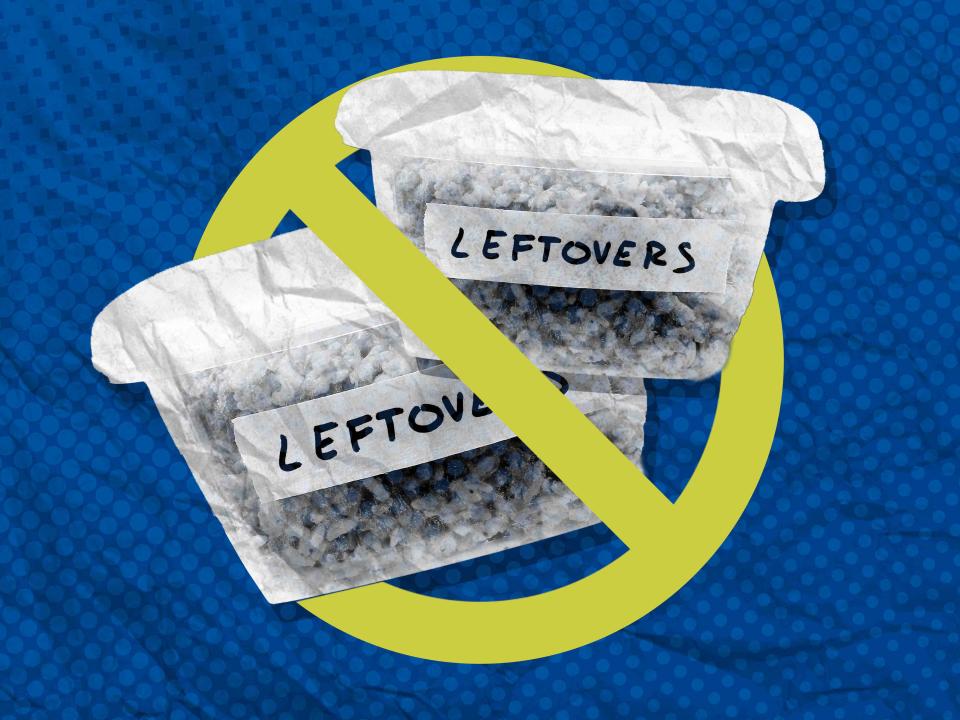The Unexpected Leftovers That Are Most Likely To Give You Food Poisoning
Recent news warns us to be more careful with leftovers than ever!

Dotdash Meredith/Janet Maples
Leftovers are the glue that holds together a weekly meal plan. Having food that can quickly be eaten from one meal to the next is what keeps schedules less stressful and the grocery bill balanced. It’s just an added bonus that the bowl of last night's spaghetti and meat sauce hits the spot any night of the week. But what if that pasta is harboring some pretty nasty bacteria that can make you really sick?
After a 2008 news story about a 20-year-old college student dying from eating leftover pasta resurfaced on TikTok, social media users are worried that their days-old food might not be safe to eat. The illness that’s caused by eating leftovers, known as “fried rice syndrome,” has garnered plenty of attention on TikTok, with creators raking in millions of views for explaining its dangers.
Which begs the question: which leftovers can be dangerous? Why? And are there any ways to avoid or minimize the risk of foodborne illness?
Why Are Leftover Grains So Dangerous?
One of the most common items to make people really sick from foodborne illness is grains. That category includes carbohydrates like pasta, farro, couscous, and rice. Uncooked pasta and rice can contain spores of a bacteria called Bacillus cereus, known for causing extreme food poisoning. These spores are tenacious and can survive even after your grain is cooked. That means even after reheating grains to a safe internal temperature, the bacteria is still alive and ready to ruin your night.
Sometimes it takes longer for the food to make it from your cooking vessel to the fridge. Sometimes the delivery app messes up and your order arrives late. When the food stays in unsafe conditions, i.e. room temperature, for a prolonged period of time, that's when things can get dicey.
The temperature "danger zone" is between 40°F and 140°F (4°C and 60°C), according to the Center for Disease Control and Prevention (CDC). Any food left out at those temperatures for extended periods of time (looking at you, Thanksgiving mashed potatoes), can become a perfect environment for bacteria to multiply.
Even though grains naturally contain contaminants from their environment or processing, the bacteria can cause major digestive issues and even death in some cases when sensitive groups, like the elderly, immunocompromised, or very young children, eat the contaminated food.
How Do I Store My Leftover Grains?
The CDC recommends getting your cooked carbs into the fridge within two hours so that bacteria won't have the opportunity to grow. If you're in a warm environment (with temperatures exceeding 90°F), that time decreases to one hour.
While you may have been told to let your food cool down before placing it in the fridge, that’s a well-worn myth that actually aids in leftovers being squarely in the crosshairs of the danger zone! But, if you’re stuck in your ways, you can speed up the cooling process by portioning into smaller, shallow containers; using ice baths; or by spreading the food on sheet trays.
How Do I Prevent Getting Sick From Leftover Grains?
So if we can't reheat our leftovers and kill the bacteria that way, what can we do? According to the USDA, CDC, and the FDA, the best way to avoid getting sick from grains or any other foodborne illness is to remember four steps: clean, separate, cook, chill.
Clean all surfaces, utensils, and most importantly hands when cooking and putting away leftovers. Make sure there's no chance of cross-contamination from physical or chemical contaminants. Cook and reheat food to a safe temperature checked with a food thermometer (165°F). Finally, chill food promptly.
We’re not saying you can no longer count on your leftover rice or pasta dishes—just that when you’re ready to eat them again, make sure you reheat your grains safely.
Read the original article on All Recipes.

 Yahoo Finance
Yahoo Finance 